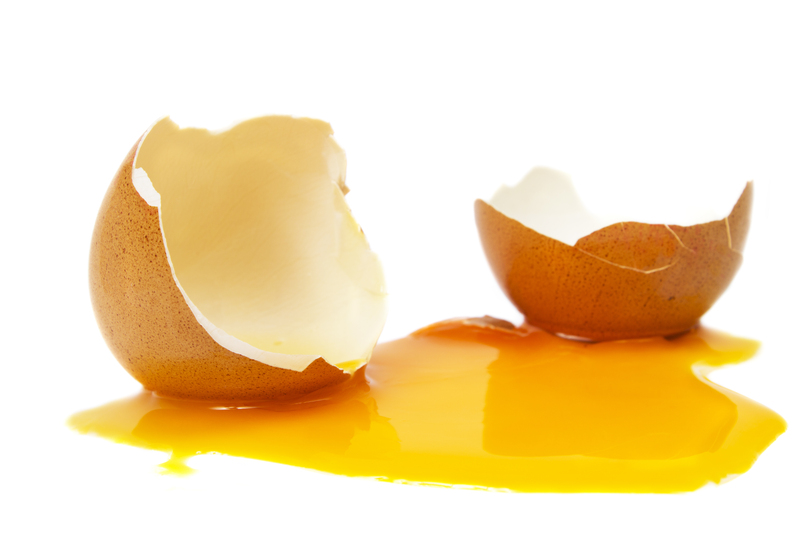Discover the Right Way to Clean and Preserve Curtains
Posted on 17/08/2025
Discover the Right Way to Clean and Preserve Curtains
Are you curious about the most effective methods to clean and preserve your curtains? This comprehensive guide covers everything you need to know! Curtains elevate your home's decor, protect against sunlight, and add a touch of warmth. Learning how to clean and preserve curtains correctly is crucial to making them look beautiful and prolonging their life.

Why Is It Important to Clean and Preserve Curtains?
Many homeowners overlook the necessity of curtain care, yet ignoring regular maintenance can have negative consequences. Over time, curtains accumulate dust, allergens, pet dander, and even mold. In addition to looking unsightly, this buildup can affect indoor air quality and reduce the lifespan of the fabric. Incorporating proper curtain cleaning and preservation practices is essential for hygiene and aesthetics.
Benefits of Regular Curtain Cleaning
- Removes dust, pollen, and allergens
- Prevents mold and mildew formation
- Retains color vibrancy and fabric strength
- Promotes a fresher, healthier home environment
- Prevents unpleasant odors from accumulating
- Keeps your window treatments looking new and inviting
Understanding Different Curtain Fabrics
One of the keys to correctly cleaning and preserving curtains is knowing the fabric type. Various fabrics require different cleaning techniques. Let's explore the most common types:
- Cotton: Durable and easy to clean but may shrink if washed improperly.
- Linen: Elegant yet prone to wrinkling and shrinkage. Needs gentle handling.
- Silk: Luxurious but delicate--requires professional or highly careful cleaning.
- Velvet: Heavy, rich fabric that can harbor dust; typically needs dry cleaning.
- Polyester and Synthetics: Popular, easy to clean, and generally more stain-resistant.
- Sheer/Net: Lightweight and delicate, calling for the gentlest care methods.
Pro Tip: Before starting, always check the care label on your curtains for recommended cleaning instructions!
How Often Should You Clean Your Curtains?
There's no universal answer; frequency depends on your environment, location, and material. Generally, experts suggest:
- Light cleaning: Every 1-2 months (dusting, vacuuming, or shaking out)
- Deep cleaning: Every 6-12 months (washing or dry cleaning)
- Immediate spot cleaning: Whenever spills or stains occur
Homes with smokers, pets, or high-traffic rooms may require more frequent curtain washing and maintenance.
The Step-by-Step Guide to Cleaning Curtains the Right Way
Step 1: Remove Dust and Debris
As the first line of defense in your curtain preservation routine, remove loose dirt and dust. Here's what to do:
- Use a handheld vacuum with a brush attachment to gently clean both sides.
- If the fabric is especially delicate, a soft brush or even shaking them outside over a railing works wonders.
- Consider lint rollers for pet hair on darker, heavy fabrics.
Step 2: Check the Care Label
Every curtain comes with a manufacturer's care instruction label. Read this thoroughly to determine if your curtains are machine-washable, hand-wash only, or require dry cleaning. This step is vital to proper curtain cleaning and preservation.
Step 3: Treat Stains Immediately
Spot clean visible stains using a gentle, fabric-appropriate cleaner. Dab (don't rub) with a clean, damp cloth. If using a stain remover, always test it on a hidden area first to ensure it doesn't damage or discolor the fabric.
Step 4: Choose the Right Cleaning Method
Based on the fabric type and care instructions, select one of the following cleaning options:
- Machine Washing: For sturdy materials like cotton or polyester. Use a mild detergent, cold or lukewarm water, and a gentle cycle. Avoid overloading the machine.
- Hand Washing: Ideal for delicate fabrics (silk, lace, sheers). Fill a clean bathtub or basin with cool water and a little gentle detergent. Let curtains soak, then rinse thoroughly.
- Dry Cleaning: For fabrics marked as "dry-clean only" (velvet, silk, lined drapes). Trust professionals to handle these curtains safely.
- Steam Cleaning: Some curtains can be cleaned in place with a handheld steamer. Steam cleaning deodorizes and sanitizes without taking them down.
Step 5: Dry Properly to Avoid Damage
Proper drying is as important as cleaning in curtain preservation:
- Reshape and hang curtains immediately after washing to prevent wrinkles.
- Never wring out delicate fabrics; instead, let excess water drip away.
- Avoid direct sunlight to prevent fading, especially with dyed or delicate materials.
- Some polyester curtains are safe for tumble-drying at a low temperature. Always check the label.
Essential Tips for Long-Term Curtain Preservation
Keeping your curtains clean is only part of the solution--preserving curtains also requires mindful habits and occasional preventative care. Here are the best ways to extend the life and beauty of your drapery:
Regular Light Maintenance
- Dust or vacuum your curtains weekly to keep buildup at bay.
- Rotate curtains seasonally if possible to ensure even sun exposure.
- Use tie-backs to keep curtains off the floor, minimizing dirt collection at the bottom.
Protection Against Sun and Moisture
- Install blinds or sheer liners to reduce direct sunlight, which can fade colors and weaken fibers.
- Avoid placing curtains too close to condensation-prone windows to reduce the risk of mold and mildew.
- Ensure proper ventilation in rooms with heavy drapes, especially in humid climates.
Dealing With Odors
Over time, curtains may trap unpleasant odors from cooking, smoke, or pets. To keep your curtains smelling fresh:
- Air them outdoors regularly on dry, breezy days.
- Spritz with a fabric refresher spray (always test first).
- Add a small, hidden sachet of baking soda or lavender between folds.
Common Mistakes When Cleaning Curtains
Even with the best intentions, it's easy to stumble into pitfalls. Avoid these errors to ensure your curtain preservation efforts are successful:
- Ignoring the care label--this can result in shrinkage, color bleeding, or fabric damage.
- Using harsh chemicals or hot water on delicate fabrics.
- Overdrying, which leads to shrinkage and wrinkles.
- Letting stains set for too long before cleaning.
- Failing to clean curtain rods or tracks, which can transfer grime back onto fresh curtains.
DIY vs. Professional Curtain Cleaning
Not all curtains are created the same, and neither are your cleaning capabilities. Here's how to decide between at-home curtain cleaning and professional services:
- At-Home Cleaning
- Cost-effective and convenient for machine-washable and some hand-washable curtains.
- Allows for more frequent maintenance and immediate spot cleaning.
- Requires careful adherence to care instructions to avoid mishaps.
- Professional Cleaning
- Recommended for hard-to-clean, lined, or intricate designs (e.g., pleats, embroidery).
- Ensures the use of appropriate solvents and techniques for delicate or antique fabrics.
- Ideal for curtains too large or heavy to handle at home.
Expert Tip: For deep stains, persistent odors, or rare fabrics, professional curtain preservation services are always safest!
Frequently Asked Questions About Curtain Cleaning and Preservation
Can I Wash Blackout Curtains in the Machine?
Blackout curtains often have a delicate lining that can be damaged in a washing machine. Check the label first. If machine washing is allowed, use a gentle cycle, cold water, and mild detergent. Otherwise, spot clean or seek professional help to avoid compromising their light-blocking properties.
Is It Safe to Iron Curtains?
Most curtains benefit from ironing after washing, especially cotton and linen. However, always check the care label for recommended temperatures. Use the lowest setting for synthetics and place a thin cloth between the iron and delicate fabrics. Alternatively, try steaming to remove wrinkles.
How Should I Store Curtains During Renovations or Seasonal Changes?
- Clean and completely dry curtains first to prevent mildew.
- Roll or fold them loosely to avoid creases.
- Store in breathable fabric bags or pillowcases, not plastic, to allow air circulation.
- Keep in a cool, dry, dark place to protect colors and fibers.

Eco-Friendly Curtain Cleaning Tips
If you want to clean and preserve curtains sustainably, consider these green alternatives:
- Use natural laundry detergents free from harsh chemicals and fragrances.
- Try steam cleaning to refresh curtains without water waste or detergents.
- DIY stain remover: Mix vinegar and water with a touch of baking soda for spot cleaning.
- Air-dry whenever possible to reduce energy use.
Revitalize Your Home by Cleaning and Preserving Your Curtains the Right Way
Now that you understand the most effective curtain cleaning and preservation methods, you can keep your drapery beautiful, fresh, and long-lasting. Remember, the key is knowing your fabric, following care labels, and practicing regular curtain maintenance. This not only elevates your home's look but also contributes to a healthier, cleaner living space for you and your family.
Make curtain care a regular part of your home cleaning routine, and watch your windows come to life! Discover the right way to clean and preserve your curtains and enjoy beautiful, lasting results.





